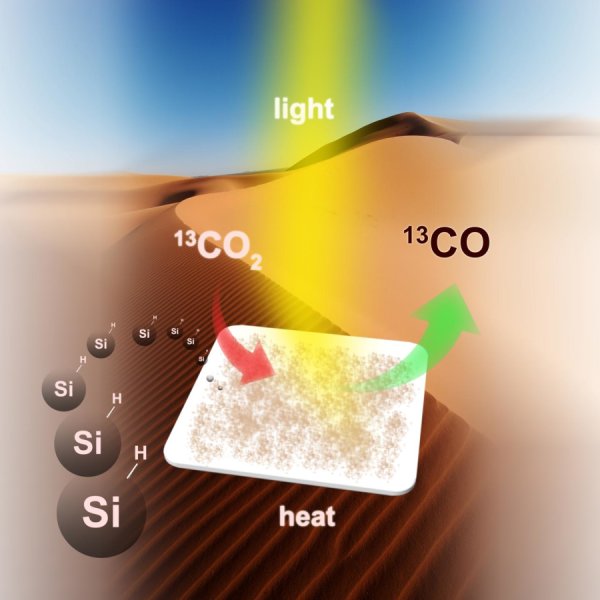Every year, humans advance climate change and global warming and quite likely our own eventual extinction by injecting about 30 billion tonnes of carbon dioxide into the atmosphere.
A team of scientists from the University of Toronto (U of T) believes they've found a way to convert all these emissions into energy-rich fuel in a carbon-neutral cycle that uses a very abundant natural resource: silicon. Silicon, readily available in sand, is the seventh most-abundant element in the universe and the second most-abundant element in the earth's crust.
The idea of converting carbon dioxide emissions to energy isn't new: there's been a global race to discover a material that can efficiently convert sunlight, carbon dioxide and water or hydrogen to fuel for decades. However, the chemical stability of carbon dioxide has made it difficult to find a practical solution.
A chemistry solution to climate change requires a material that is a highly active and selective catalyst to enable the conversion of carbon dioxide to fuel. It also needs to be made of elements that are low cost, non-toxic and readily available.
In an article in Nature Communications published August 23, Ozin and colleagues report silicon nanocrystals that meet all the criteria. The hydride-terminated silicon nanocrystals -- nanostructured hydrides for short -- have an average diameter of 3.5 nanometres and feature a surface area and optical absorption strength sufficient to efficiently harvest the near-infrared, visible and ultraviolet wavelengths of light from the sun together with a powerful chemical-reducing agent on the surface that efficiently and selectively converts gaseous carbon dioxide to gaseous carbon monoxide.
The potential result: energy without harmful emissions.
